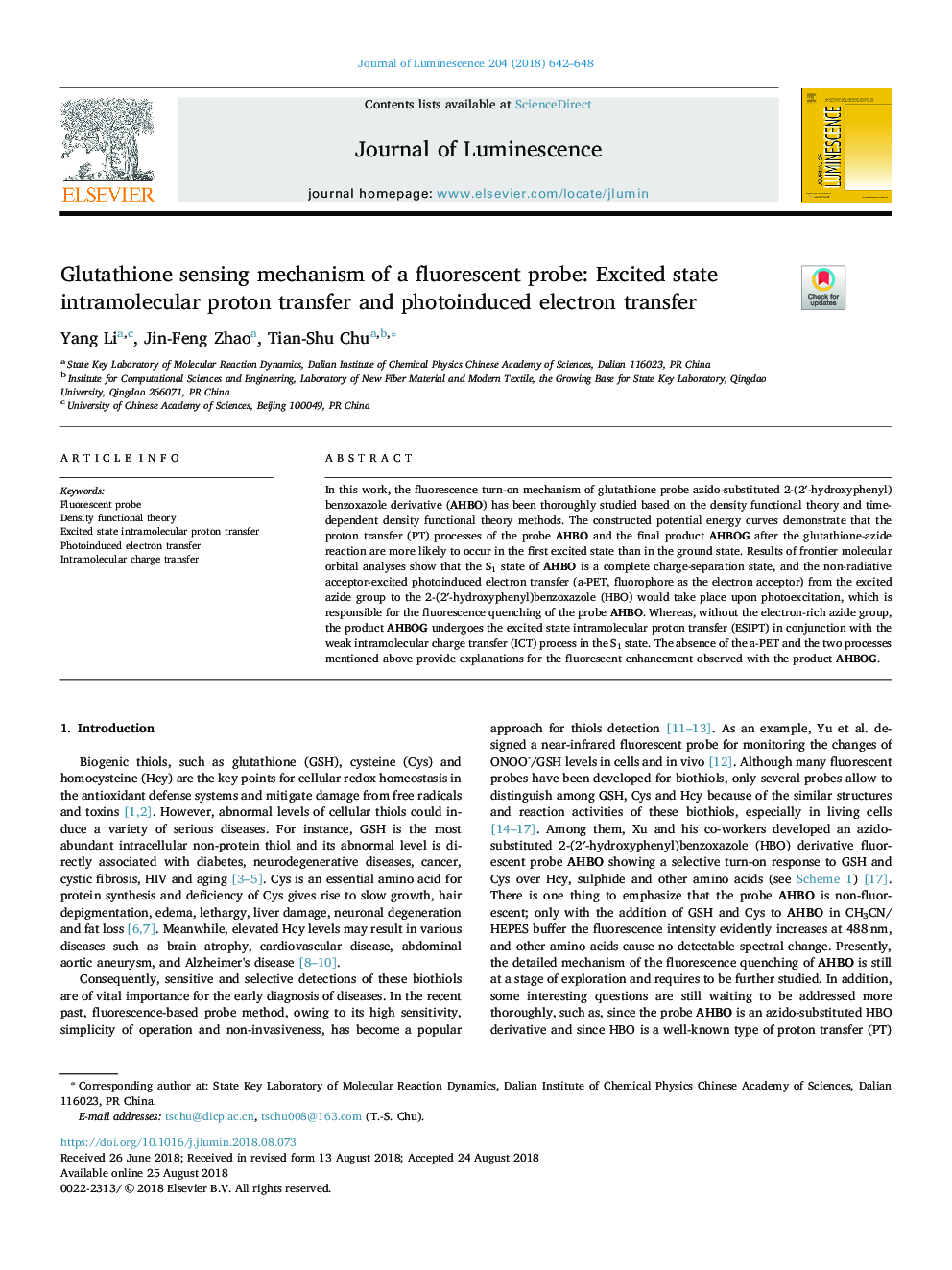| Article ID | Journal | Published Year | Pages | File Type |
|---|---|---|---|---|
| 11006560 | Journal of Luminescence | 2018 | 7 Pages |
Abstract
In this work, the fluorescence turn-on mechanism of glutathione probe azido-substituted 2-(2â²-hydroxyphenyl)benzoxazole derivative (AHBO) has been thoroughly studied based on the density functional theory and time-dependent density functional theory methods. The constructed potential energy curves demonstrate that the proton transfer (PT) processes of the probe AHBO and the final product AHBOG after the glutathione-azide reaction are more likely to occur in the first excited state than in the ground state. Results of frontier molecular orbital analyses show that the S1 state of AHBO is a complete charge-separation state, and the non-radiative acceptor-excited photoinduced electron transfer (a-PET, fluorophore as the electron acceptor) from the excited azide group to the 2-(2â²-hydroxyphenyl)benzoxazole (HBO) would take place upon photoexcitation, which is responsible for the fluorescence quenching of the probe AHBO. Whereas, without the electron-rich azide group, the product AHBOG undergoes the excited state intramolecular proton transfer (ESIPT) in conjunction with the weak intramolecular charge transfer (ICT) process in the S1 state. The absence of the a-PET and the two processes mentioned above provide explanations for the fluorescent enhancement observed with the product AHBOG.
Keywords
Related Topics
Physical Sciences and Engineering
Chemistry
Physical and Theoretical Chemistry
Authors
Yang Li, Jin-Feng Zhao, Tian-Shu Chu,
